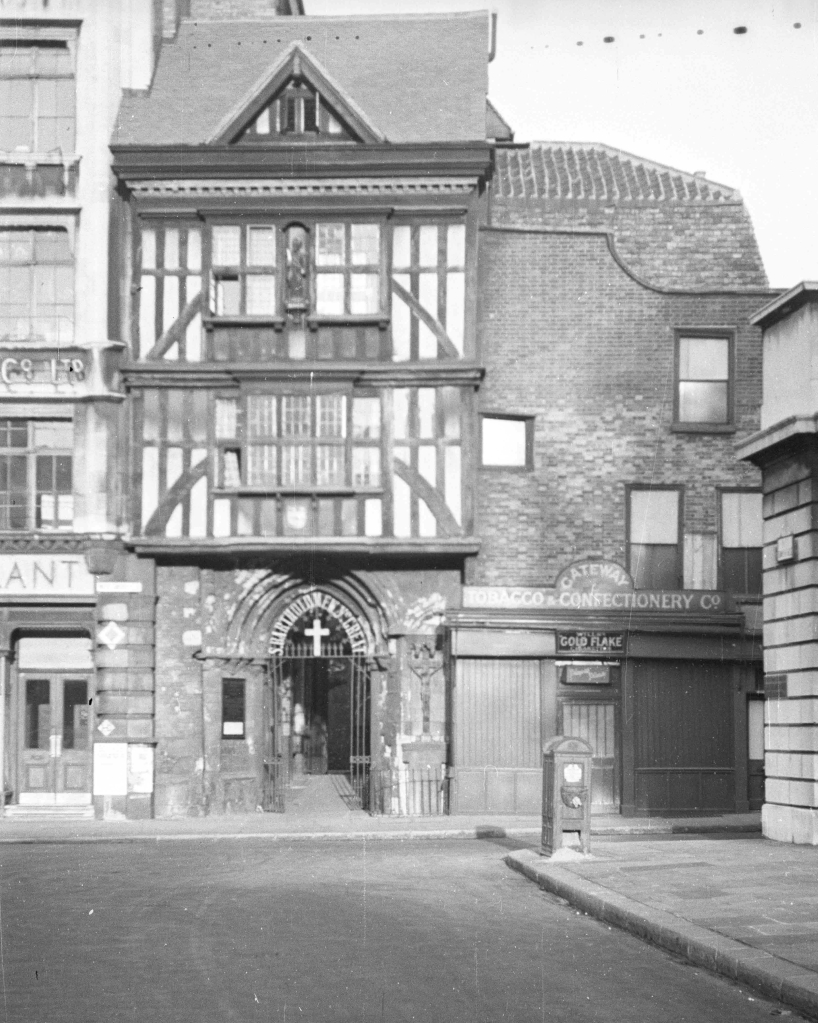
During the 18th century, a Georgian façade was constructed over the Tudor timbers and, for the following 200 years, the gatehouse was a shop. The damage caused by a German bomb dropped during a Zeppelin raid in 1917 revealed the original frontage
In 1932, the building was fully restored, and is now Grade II listed.
and even retains some of the 13th century stonework from the original nave. On the first floor of the property there is bolection-moulded panelling from around 1700, whilst the attic boasts original panelling dating back to 1595.
The gatehouse was used as a school between 1948 and 1979. Also, William Wallace was hanged, drawn and quartered in Smithfield – within 100 yards of the gatehouse.
Image: Photographer unknown (1940s)

Image: © Steven Miell (TimeViews)

